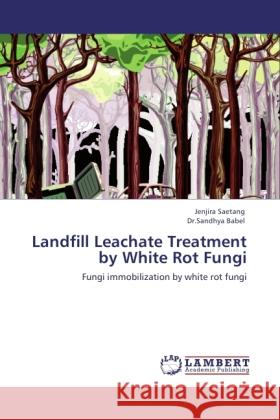Landfill Leachate Treatment by White Rot Fungi » książka
Landfill Leachate Treatment by White Rot Fungi
ISBN-13: 9783845432250 / Angielski / Miękka / 176 str.
White rot fungi produces various isoforms of extracellular enzymes including laccase, manganese peroxidase and lignin peroxidase that can degrade the pollutants and, thus, can be used to treat wastewater, including landfill leachate. In this research, the treatment of leachate by using white rot fungi, namely Trametes versicolor BCC 8725 and Flavodon flavus BCC 17421 was studied. Four types of leachate were collected in different time period and different source from Nonthaburi solid waste disposal site, Thailand. Leachate differs in terms of color, BOD, COD. The fungi were immobilized on polyurethane foam (PUF). Glucose, corn starch and cassava were used as a co-substrate and were varied at different concentration. Batch experiments were done to determine the optimum pH, cosubstrate and effect of contact time. Continuous experiments were carried out using vertical flow baffled reactor to observe the effect of organic loading, reuse of fungi in various cycles and its possibility to use in large scale leachate treatment. The effect of biomass growth was observed by immobilizing fungi on PUF for different time periods (for 4 and 15 days initially in Potato Dextrose Broth (PDB)..











